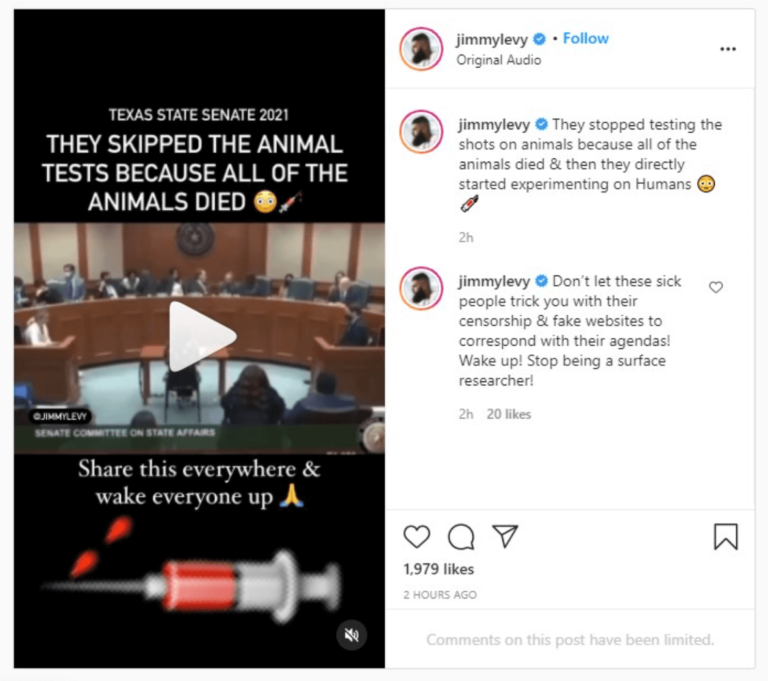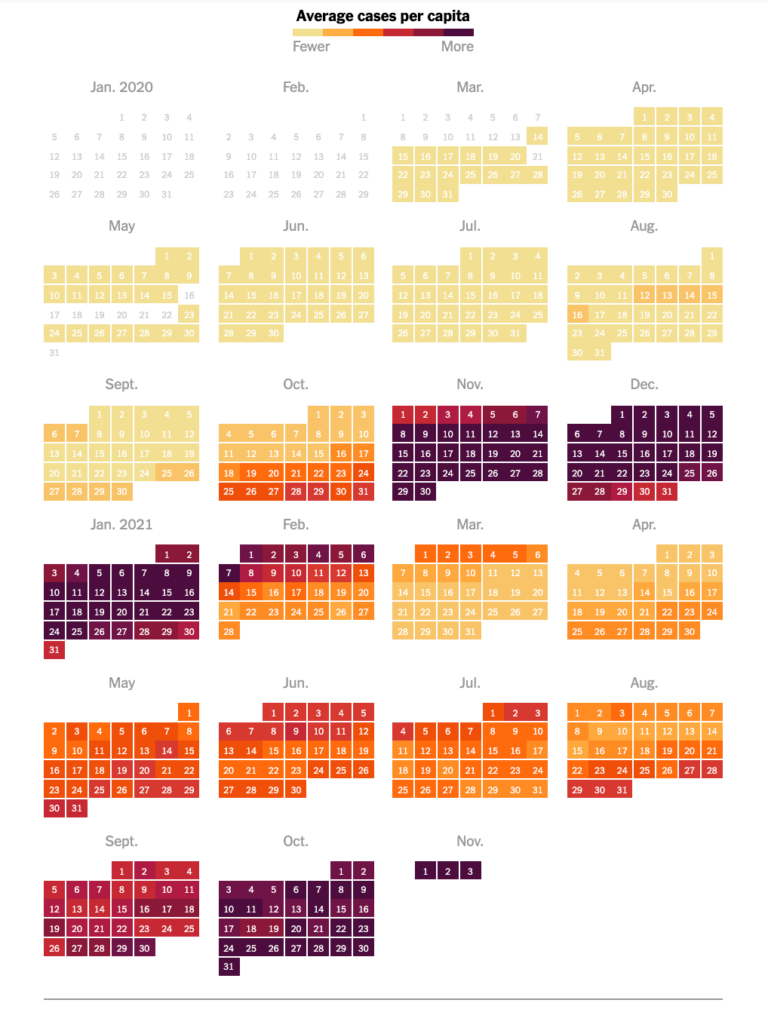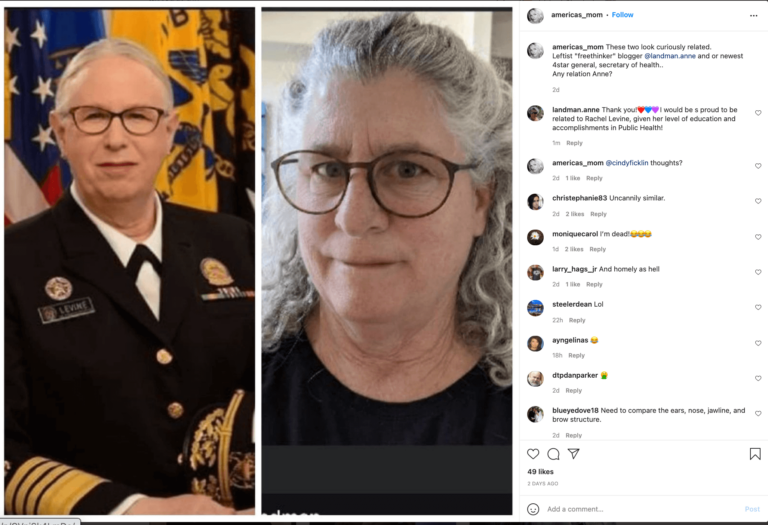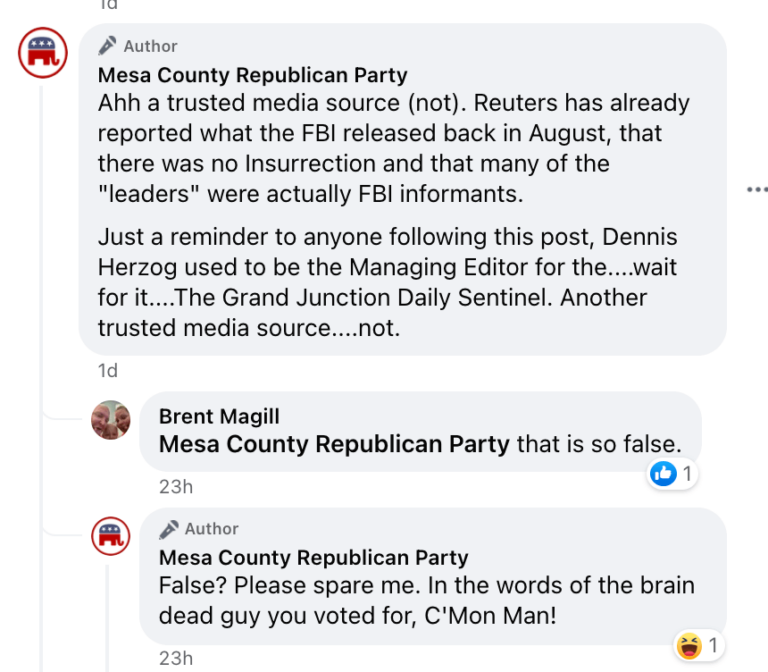HD 55 candidate Cindy Ficklin spreads false, dangerous misinformation about vaccines & Covid on her “Cindy Says” blog
November 12, 2021
18 Comments
After Republican House District 55 candidate Cindy Ficklin was banned from Facebook for 30 days on May 27, 2021 for spreading the lie that Covid-19 ...
Read More →
CO SOS Elections Division files another lawsuit against Tina Peters, this time over campaign finance violations
November 9, 2021
6 Comments
The Elections Division of Colorado’s Secretary of State’s office filed a lawsuit (pdf) November 5 against Mesa County Clerk Tina Peters for Peters’ ongoing efforts ...
Read More →
A look at where Mesa County is now with Covid, and how other places are doing by comparison
November 5, 2021
21 Comments
Arguably, Mesa County citizens’ denial of the science around Covid-19 transmission, and the overall lax attitude of our area’s elected officials toward reining in the ...
Read More →
Mesa County fiddles while Covid-19 rages
November 4, 2021
21 Comments
Back on March 22, 2021, the Mesa County Commissioners, none of whom have a medical degree or any experience in epidemiology, immunology, virology or any ...
Read More →
Election conspiracy theorist Sherronna Bishop compares G.J. blogger to a top U.S public health physician
October 31, 2021
11 Comments
In what was meant to be a slur aimed at transgender people, Garfield County election conspiracy theorist Sherronna Bishop, who bills herself as “Americas Mom,” ...
Read More →
Mesa County GOP Chair lies to public, saying there was no insurrection and many Capitol invasion leaders were FBI
October 27, 2021
12 Comments
Ever wonder how so many Mesa County citizens became SO deluded that now big groups of them like “Stand for the Constitution” and “Mesa County ...
Read More →






